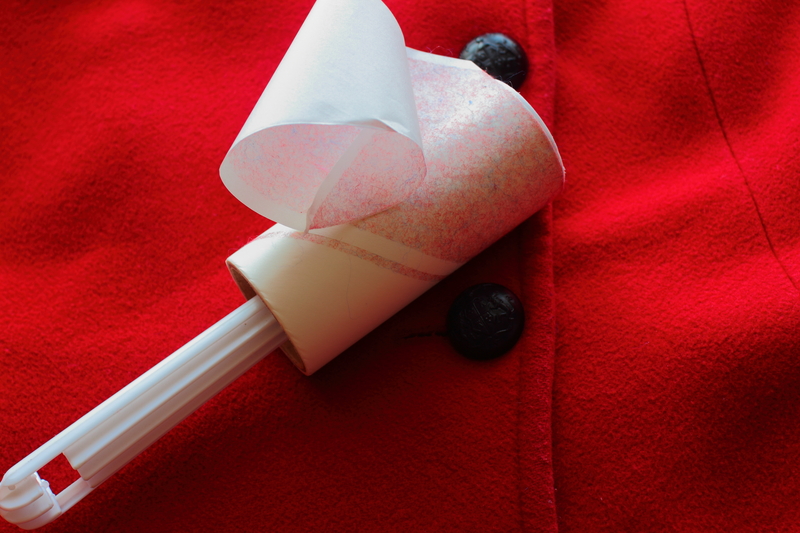Tips to Prevent and Eliminate Mold in Your Bathroom
Posted on 25/08/2025
Tips to Prevent and Eliminate Mold in Your Bathroom
Mold in the bathroom is not just unsightly--it can also be a health hazard and cause extensive structural damage if not addressed promptly. Having a smart mold prevention and removal strategy is essential for every homeowner or renter. Below you'll discover comprehensive, actionable advice on how to prevent bathroom mold and eliminate mold from your bathroom if it has already taken hold.
Why Is Bathroom Mold So Common?
The average bathroom creates the perfect environment for mold growth: high humidity, warmth, and plenty of organic material (like dust, soap residue, and grout). Even with regular cleaning, persistent moisture problems can lead to stubborn mold infestations.
Understanding the Health Risks of Bathroom Mold
- Respiratory Issues: Mold spores can trigger asthma, allergies, and respiratory infections.
- Skin Irritation: Direct contact may cause rashes or other allergic reactions in sensitive individuals.
- Structural Damage: Over time, mold eats away at grout, caulk, paint and even the underlying walls.

Top Tips to Prevent Mold in Your Bathroom
1. Improve Bathroom Ventilation
Ventilation is your first defense against moisture buildup and, by extension, mold infestation. Consider these proven tactics:
- Install and regularly use an exhaust fan during and after showers. Leave it running for at least 30 minutes post-shower.
- Open bathroom windows to let moisture escape, especially during and after baths or showers.
- If your bathroom has no windows or fan, use a portable dehumidifier to keep humidity levels low.
2. Keep All Surfaces Dry
Moisture is the breeding ground for all types of mold in bathrooms. Make it a habit to dry surfaces after use:
- Wipe down shower walls and doors with a squeegee after each use.
- Quickly mop up standing water on floors, especially near toilets and bathtubs.
- Hang towels and bath mats to dry outside the bathroom if possible.
3. Regularly Clean Your Bathroom
Routine cleaning disrupts mold growth and helps you spot trouble areas early. For optimal results:
- Scrub tiles and grout weekly with a mold-killing bathroom cleaner.
- Wash or replace shower curtains and liners monthly (choose mold-resistant types if possible).
- Disinfect bathroom sinks, faucets, and counters to remove soap scum and hidden spores.
4. Use Mold-Resistant Products
Opting for mold-resistant paints, grout, and caulk can provide an effective barrier against bathroom mold. Here are some expert suggestions:
- Choose paint labeled as "mildew-resistant" for bathroom walls and ceilings.
- Use waterproof caulking and grout specifically designed for wet areas.
- Install antimicrobial shower curtains and mats to help prevent mold and mildew buildup.
5. Address Leaks Promptly
Even small leaks can cause major mold problems if not fixed quickly. Pay attention to:
- Dripping faucets or showerheads.
- Leaks around the base of the toilet or under the sink.
- Damp spots or water stains on ceilings and walls outside the bathroom, which could indicate hidden leaks.
6. Control Humidity Levels
Ideally, indoor humidity should be between 30% and 50%. Monitor humidity using an inexpensive hygrometer:
- Run a bathroom fan or dehumidifier as needed.
- Keep doors open after showers to promote airflow and drying.
7. Organize and Declutter
Clutter can create hidden, hard-to-clean crevices where mold can thrive. To make mold prevention easier:
- Minimize objects on counters and open shelves.
- Store toiletries in wire baskets, which allow for airflow and quicker drying.
- Regularly clean and declutter under-sink cabinets.
How to Eliminate Mold in Your Bathroom
Despite your best efforts, you might still find patches of black mold in the bathroom or mildew on shower tiles. Follow these steps to safely and effectively remove the infestation.
1. Identify Mold Hotspots
Common areas for bathroom mold growth include:
- Shower and tub grout lines
- Behind and under sinks
- Caulking around bathtubs
- Ceilings above showers
- Back of toilet and beneath tanks
- On and under bath mats
2. Prepare for Safe Mold Cleanup
Small-scale mold outbreaks (less than 10 square feet) can be handled safely by most homeowners. For large infestations or if you have health concerns, consider hiring a professional mold removal service.
- Wear rubber gloves, goggles, and a mask rated for mold spores.
- Open windows and run the fan for ventilation.
- Remove all bath mats, towels, curtains, and personal items from the affected area.
3. Use the Right Cleaning Solution
Several cleaning solutions are effective against bathroom mold:
- White Vinegar: Fill a spray bottle with undiluted vinegar, spray on the mold, let sit for one hour, then scrub and rinse.
- Hydrogen Peroxide (3% solution): Spray on affected area, wait 10 minutes, scrub, then rinse.
- Bleach solution (1 part bleach to 10 parts water): Kills mold and disinfects. Good for tough patches but can discolor grout and damage some finishes.
- Use a commercial bathroom mold remover for persistent or stubborn areas. Be sure to follow label instructions.
4. Scrub and Remove the Mold
- Use a stiff-bristled brush for grout and tiles.
- For caulking, a toothbrush or soft brush can be effective.
- Rinse the area thoroughly after scrubbing.
- Repeat treatment if stains remain.
5. Dry and Dehumidify
After cleaning, it's critical to remove all residual moisture:
- Wipe surfaces with a clean, dry towel.
- Run your bathroom fan or a portable dehumidifier until the area is completely dry.
6. Replace Damaged Materials if Necessary
- If the mold has penetrated caulk, grout, or drywall, remove and replace the affected material.
- After removing damaged materials, thoroughly clean and dry the area before repairs.
Bathroom Mold Prevention: Long-Term Strategies
Preventing recurring mold requires a combination of habits and structural upgrades:
- Annual Inspections: Have a professional check plumbing and ventilation systems.
- Reapply mold-resistant paint every few years on walls and ceilings.
- Re-grout and re-caulk as needed, especially when cracking or peeling appears.
- Upgrade to water-resistant wall panels or tiles in chronically damp areas.
Consider Professional Help for Persistent Bathroom Mold
If you experience wide-spread or returning mold despite your efforts, or if you notice structural damage or musty odors that persist, consult a licensed mold remediation specialist. Professionals can:
- Inspect for hidden mold in walls or under flooring
- Recommend waterproofing or ventilation solutions
- Safely remove hazardous or deeply embedded mold colonies

Key Takeaways: Effective Bathroom Mold Management
- Use proactive moisture control--ventilation, regular cleaning, and quick leak repairs are crucial.
- Act quickly when you spot signs of mold to prevent it from spreading further.
- Utilize mold-resistant products and maintain them for lasting defense.
- Understand when to seek professional assistance for major or recurring mold issues.
Frequently Asked Questions on Bathroom Mold
-
What causes black mold in my bathroom?
Black mold generally develops in areas with persistent moisture, lack of air flow, and organic debris. Leaky pipes, poor ventilation, and damp showers are the usual culprits. -
How often should I clean my grout and tiles?
Ideally, scrub all tiles and grout with a mold-killing cleaner at least once a week--more often for showers used daily. -
Is bathroom mold dangerous?
Yes, mold exposure can lead to respiratory issues and allergic reactions, especially for those with asthma or sensitive immune systems. -
Is bleach the best solution for eliminating bathroom mold?
Bleach is effective, but not always the best. Vinegar and hydrogen peroxide are also proven and less harsh alternatives, especially for delicate surfaces.
The Bottom Line
Proactively preventing bathroom mold is far easier than dealing with a stubborn, widespread infestation. Consistent ventilation, moisture control, smart cleaning routines, and rapid repairs will create a mold-resistant bathroom. Should mold appear, act quickly with safe removal methods--and don't hesitate to consult professionals for extensive or recurring problems. Tackle mold today for a healthier, fresher, and more enjoyable bathroom experience!




